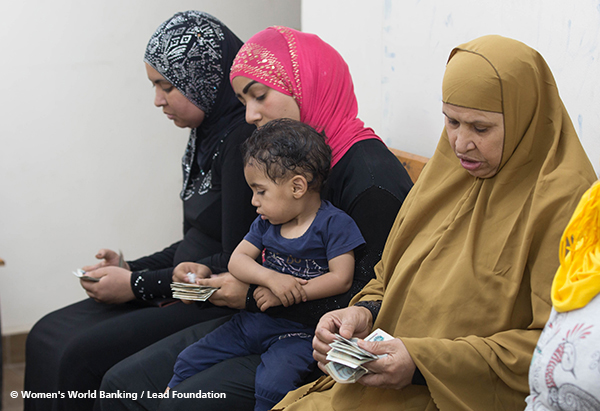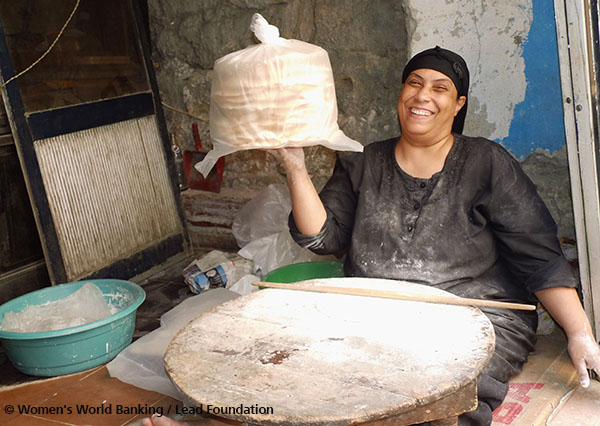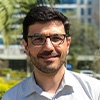The second in a series of blog contributions throughout this year to complement the European Microfinance Award 2021 on ‘Inclusive Finance and Health Care’, Gilles Renouil from Women’s World Banking presents the argument for a hospital cash and life insurance program and discusses the commercial viability of such a model. Over the coming months, we’ll be publishing more in this series from our members and other experts in the field. Watch this space!
 As leaders face the enormous challenge of reviving post-pandemic economies, financial inclusion plays a key role. But how do we ensure that incentives, tools and programs specifically designed for low income populations become commercially viable in their own right, and remain financially sustainable over the long term?
As leaders face the enormous challenge of reviving post-pandemic economies, financial inclusion plays a key role. But how do we ensure that incentives, tools and programs specifically designed for low income populations become commercially viable in their own right, and remain financially sustainable over the long term?
In last month’s blog “Five to thrive Embedding health care in financial services”, Lisa Morgan and Craig Churchill from the International Labour Organization (ILO) highlighted that while the need is greater than ever, it’s not easy to design and deliver financial services that can help to finance health care for vulnerable groups.
We at Women’s World Banking look back at 15 years of design and implementation of innovative health insurance programs for low-income populations and confirm that yes, it is not easy. Yet, Caregiver, our flagship insurance solution, provides a meaningful, affordable and sustainable life insurance and hospital cash solution to middle- and low income women (entrepreneurs) in developing countries, proving that with discipline and commitment it can be done.
Insurance – why it is crucial to enabling financial inclusion
Insurance protects hard earned assets and income from unexpected shocks and allows individuals and business owners to get back on their feet faster when disaster strikes. It is fundamental to the growth and development of any economy, and in particular to developing economies. Unfortunately the benefits of insurance are not as well understood as they should be in the quest to bring financial inclusion to scale. In this context it was recently established that insurance plays an important and direct role for achieving nine of the 17 Sustainable Development Goals (SDGs): No Poverty, Reduced Inequalities, Zero Hunger, Good Health and Well-being, Gender Equality, Decent Work and Economic Growth, Industry Innovation and Infrastructure, Climate Change and Partnerships for Goals.
Caregiver – what it is, and what it does
Caregiver is a hospital cash and life insurance program, primarily – but not solely - aimed at low- or middle-income women entrepreneurs. The program, established in 2006, is an income replacement tool addressing that need, complementary to the available government social security schemes, but it does not exist as a standard insurance offering. It has hitherto been successfully rolled out in 4 countries, serving 2 million customers, with flagship programs in Jordan and Egypt. Bundled with micro-credit loans at a nominal monthly premium of around US$1 (premiums vary from 45c to US$2) per customer, all health conditions are covered from day one, including maternity and pre-existing conditions. There are no waiting periods or exclusions. The insured is eligible to receive a cash amount (in general between $15-40 per night), making the program an attractive value proposition for low-income women. All the customer has to do is to show proof of hospitalisation.
The benefits can be used to cover indirect expenses associated with illness or hospitalisation. The most critical of these allowed expenses is the lost income clients experience when they must suspend their business operations. But other indirect expenses covered by Caregiver include transportation to and from the hospital, meals, and other incidentals.
Caregiver – barriers to the natural development of new, inclusive insurance markets: what we’ve learned
Many low-income clients, and women in particular, have no previous relationship to insurance and don’t know how it works. While they relate to the notion of risk prevention, and coping mechanisms and services within their community, they have no concept of commercial financial risk management solutions. They trust only in personal relationships that are tried and tested. Persuading low-income customers to buy insurance is therefore an important barrier.
Many microfinance institutions are ideal aggregators but lack sufficient understanding of insurance to make the case to clients - their core business is lending. Developing and selling inclusive insurance products is a second barrier.
Finally, insurance companies are risk-averse and data-driven. They are interested in scale but rarely have sufficient data on the low-income segment to price the risks and hence do not regard this market as insurable. Ignoring the low-income segment and denying capacity to it is the ultimate barrier.
Addressing these barriers
So how can we remove those barriers? It is unfair and unproductive to solve the problem by asking our low income customers to make the first step. The financial sector needs to make it easy for them. But how?
1. Bundling a solution for a grouped portfolio to get economies of scale and remove all exclusions. Pilot thoroughly to create data and prove the case to the insurer.
Insurance is a game of numbers. The more volume a program has, the more value it generates for the customers. Voluntary products bring customer choice and that should be the goal, but it bears two fundamental risks: anti-selection (customers with poorer health are more likely to enrol); and they are slow to scale.
This threatens the sustainability of the program because, firstly, anti-selection drives price upwards and insurers add exclusions and waiting periods; and secondly, more exclusions take more time to explain or to settle claims. This makes the process more expensive and microfinance institutions wait for customers to opt in for insurance until they see its real value.
By developing bundled products (for example with a loan) we can reach statistical numbers to confirm actuarial assumptions sooner. Bundling does not mean that one-size-fits-all or that we dilute the efforts on customer education. In fact, we need to double it up so that the customers can see that insurance works for them, and that they will want to renew the loan with that MFI because of insurance, not in spite of it.
Financial Service Providers have a critical mass of customers, data and negotiating power and so can dilute risk more easily. Reservations against maternity cover on the grounds that it creates a moral hazard and should be excluded are irrelevant based on a portfolio of 100,000 clients because not all women will be pregnant at the same time. Maternity cases never represent more than a third of the cases in our schemes, even when 95% of the client base is women. Caregiver has no exclusions, no deductible, no waiting period.
2. Taking ownership of product development and of the delivery process.
 Banks and microfinance institutions must understand that coping with the cost of health emergencies is a significant barrier that women entrepreneurs face to growing their livelihoods, and they should not have to make a choice between health and economic prosperity. Otherwise it will also ultimately impact their bottom line, as financial and physical health are closely related.
Banks and microfinance institutions must understand that coping with the cost of health emergencies is a significant barrier that women entrepreneurs face to growing their livelihoods, and they should not have to make a choice between health and economic prosperity. Otherwise it will also ultimately impact their bottom line, as financial and physical health are closely related.
Caregiver is an income replacement tool addressing that need, complementary to the available government social security schemes, but it does not exist as a standard insurance offering. Instead, MFIs play the most critical role to build awareness and trust among the customers, which requires MFIs to depart from their default position to buy and plug a service from insurers. Data and clients without analysis and research are like fallow land. MFIs must leverage the knowledge of clients and their trust to drive product development, delivery and claims process as much as possible. Only this way can they reduce insurance high operating costs. This is where technical assistance is most useful.
When designing a family coverage for Lead Foundation in Egypt (85% women customers), we found that for a woman micro-entrepreneur to give birth and not get coverage for her child was extremely stressful because she would have to prioritize caring for her child and reduce the effort to run her business, thereby losing revenue. Our insurance partner was originally reluctant to cover new-borns, but we were able to provide data patterns from a similar scheme and agreed to proceed with an estimated number of new-borns and a few indicators to monitor for the pilot. Piloting is the best moment to learn as you start small in a protected environment.
3. Listening to your customers at every step of the process and measuring the risks you take.
Understanding your customers’ needs are key to developing not only the right product, but also the right process.
In terms of products, when we designed our first with our partner Microfund for Women in Jordan (93% women), we proposed to give women customers a benefit in case of death. During the prototype testing, most women said that the product would be less useful because if they were to die, their husbands would not invest it in the children. Instead, he would use the money to get married again. But if he were to die, she would lose his contribution to the household. In fact, data showed that husbands were 9 years older than their wives on average, which made the risk that she would become a widow higher. Based on these insights, we designed a product to cover the life of the husband.
And in terms of process, microfinance firms are very close to their customers, and they generally know when clients face health emergencies and can support them during claims filing. Loan Officers are the most important stakeholders when servicing the women’s market. From Lead Foundation’s experience, we know that women know their loan officers, but they don’t know Lead as a brand (“I took the loan from Mr. Mahmoud”). Women ask for more information and personalized advice from people they can trust, and loan officers fulfil that need very well. They can also help the customer to navigate the process when they hear their customer has been sick.
Women’s financial behaviours have a positive multiplying effect on the finances of the household, and offering a good product allows them to realise that potential. According to the UN, women reinvest 90% of their earnings back into their families and communities while men invest 35%. Women have been particularly affected by this COVID crisis and as leaders face the enormous challenge of reviving post-pandemic economies, it is logical that women and their resilience must have a prominent place in their strategies.
Looking at the Financial Services market opportunity, well implemented hospital cash programs have the potential to serve a high-volume market at low cost, and at the same time build financial services and insurance literacy amongst the customers, as well as generating trust in the concept of insurance.
Simple, affordable, needs-based products like Caregiver can play an important role in helping low-income populations to stay afloat and thrive in the post-covid economy. But it will require all hands on deck to bring such products to meaningful scale. It is no longer sufficient for donors, insurers and MFIs to act in isolation - we need to partner with all parts of the financial services ecosystem to attain sufficient volume to make financial inclusion commercially viable, impactful, and sustainable over the long term.


Leave a comment